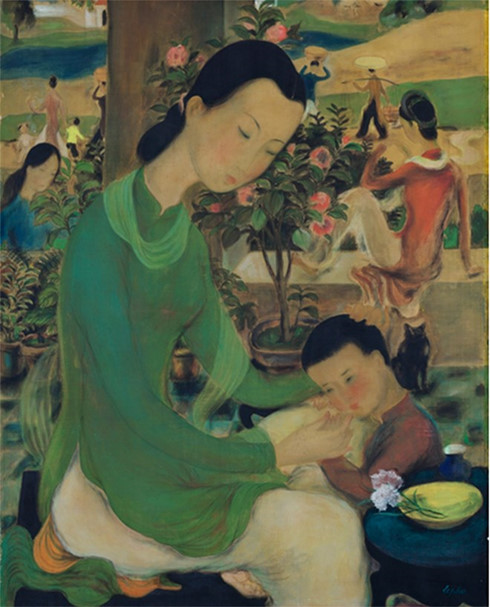Vietnamese painting fetches US$1.2 million in Hong Kong
 |
The painting, made with ink and gouache — a type of watermedia consisting of pigment, water, a binding agent (usually dextrin or gum arabic), and sometimes additional inert material — is 82cm x 66cm and was completed during the period of 1937-39.
It combined "Oriental" themes with "Occidental" forms, a specialty in Pho’s works.
Le Pho (1907 - 2001) was a Vietnamese painter. In 1932, he earned a scholarship to study at École des Beaux-Arts (National School of Fine Arts) in Paris. After returning to the country, he taught at Vietnam University of Fine Arts in Hanoi.
His favourite subjects are Vietnam landscapes, still life with flowers, family settings and portraits. Vietnamese women — often portrayed as elongated, surrealistic figures — are a recurrent theme in his works.
As part of the university’s first generation, Pho spent most of his time working in France. Each of his works are painstakingly well-preserved, stored and separated into seperated files. Thanks to that, his paintings are thriving on the world market. His works normally range from US$10,000 to US$50,000 per painting.
Before Family Life was sold, three other of the artist’s pieces sold at high prices this year.
The trio Nhin Tu Dinh Doi (A View From Top of The Hill, oil in canvas, 1937), sold at US$844,697 , Thieu Nu va Canh Na (Young Lady and the Sugar Apple branch, silk on canvas, 1938), sold at US$567,178 at Hong Kong’s Christie’s; and Tinh Mau Tu (Motherhood, silk canvas, 1940) sold at US$629,276 at Hongkong’s Sotheby’s.
What the stars mean:
★ Poor ★ ★ Promising ★★★ Good ★★★★ Very good ★★★★★ Exceptional
Latest News
More News
- Free tickets, Lunar New Year promotions on offer at Vietjet Mega Livestream (November 26, 2025 | 15:32)
- UNIQLO unveils upgraded heat-retention wear at Hanoi event (October 26, 2025 | 10:00)
- Vietnam named among world’s top four culinary destinations (October 24, 2025 | 17:09)
- Vietnam and Denmark strengthen dialogue on sustainable fashion (October 20, 2025 | 09:11)
- Fusion rolls out special initiatives to celebrate Vietnamese Women’s Day (October 17, 2025 | 20:00)
- Showcase AC 2025 set to light up Hanoi stage (September 12, 2025 | 18:06)
- Hotel Indigo Saigon The City hosts event to reimagine city’s beloved alleyways (July 23, 2025 | 17:04)
- UNIQLO’s sustainability strategy behind the brand's global growth (June 23, 2025 | 15:42)
- Vietnam International Travel Mart 2025 kicks-off in Hanoi (April 10, 2025 | 17:50)
- Phu Quoc named as one of Asia's 'Best Islands' (March 13, 2025 | 10:24)

















 Mobile Version
Mobile Version